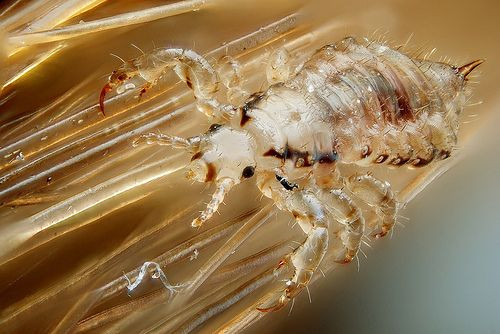Lice Removal With Ordinary Conditioner As Effective As Special Medicines: Lather, Rinse, Delouse?

They’re a public school nightmare and an absolute nuisance at home. Head lice aren’t disease-spreading, but they do make for an annoying removal process, besetting sufferers with itchy scalps and crawling feelings of paranoia. Offering a glimmer of hope to the constant worrier, a new study finds ordinary conditioner does a comparable job of removing lice compared to specialty removal products.
Like a lone pimple or a hangnail, head lice are purely cosmetic. They don’t pose any health risks past the disturbing presence, which is fortunate in the big-picture, but doesn’t mean they’re any less unwelcome. This is especially true in schools, where head-to-head contact (the main form of transmission) occurs far more often compared to other places — leaving children to fidget at their desks, and teachers and nurses to mediate between the problem at hand and parents clamoring to pluck their child from school.
With most health woes, preventive care is the best option. If we can prevent the problem from ever arising, health officials argue, we’ll save a boatload of time, money, and energy in the long run. Luckily, the present study offers just such a benefit, as incorporating regular, rigorous conditioning as part of a child’s bath or shower could offer the same benefits of lice removal products — before it’s too late.
The reason lice demand special shampoos in the first place is that lice don’t just live on the scalp; they breed there, too. Called “nits,” these eggs attach to the base of a person’s individual hairs and literally glue themselves onto the strands. Even with special products and a fine-toothed comb, some nits are incredibly stubborn and remain attached. It’s for this reason researchers from the Entomological Society for America sought to compare the effectiveness of multiple removal agents.
The team combed through data on 605 individual hairs from six different children. They found each hair had a single nit attached to it. Approximately 14 percent contained a dead egg, while the rest were empty. When they tried to remove the eggs, they found that hair that had never been treated offered the greatest difficulty for removal. Meanwhile, the hair that had been soaking in deionized water — a well-tested lubricant for lice removal — facilitated easier egg detachment in both the ordinary conditioner and specialty products.
"There were no significant differences in measured forces between the ordinary conditioner and the commercial nit removal product," the authors wrote in their report. "The commercial nit removal products tested in the current study do not seem to have an additional effect."
According to the Centers for Disease Control and Prevention’s estimates, somewhere between six and 12 million infestations occur each year in the U.S. among children ages 3 to 11. People who’ve contracted head lice should avoid sharing clothing with others or sitting or lying on the same chairs and couches until the person can be sure the lice have been removed.
If you fear your itchy scalp is more than just the occasional dryness, the researchers recommend perhaps taking a thorough showering before rushing to the nearby pharmacy in a panic. "Treatment with conditioner reduces the coefficient of friction of undamaged and damaged hair," they note. "As a consequence, conditioners will facilitate nit removal."



























